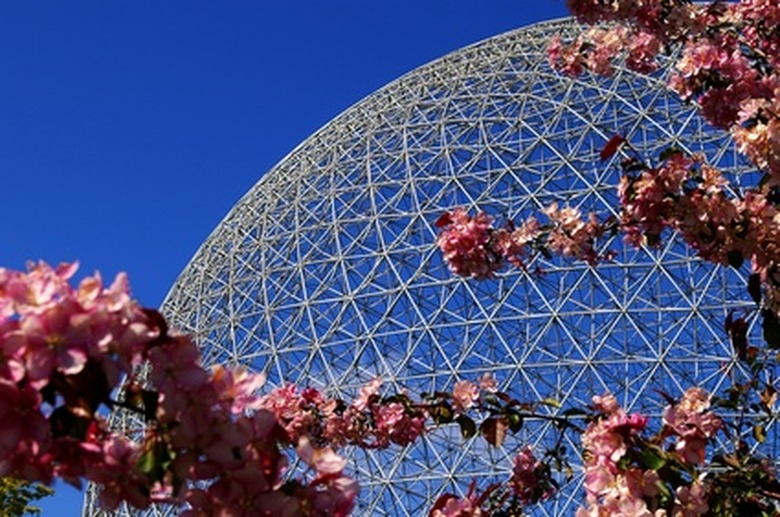How To Build An Ecosphere
The term EcoSphere refers to a self-contained system of interacting living organisms that can survive without an external input over an extended period of time. Trademarked EcoSpheres are sold online as sealed glass spheres that contain shrimp, bacteria, aquatic plants and other organisms. Reviews indicate that they may live for anywhere between about a year to many years. With attention to the basic principles of self-contained ecosystems, it's possible to build a homemade version whose inhabitants will survive with a minimum of care and outside influences.
TL;DR (Too Long; Didn't Read)
An EcoSphere is a trademarked, closed ecosystem that produces food and oxygen for its inhabitants while recycling waste and carbon dioxide. With attention to features such as balancing the exchange of gases and waste recycling, DIY EcoSpheres can be built to be self-sufficient.
A small, self-contained facsimile can be built out of large, clear plastic bottles. With one bottle at the base holding the aquatic environment, additional bottles with the bases cut off can be placed on top of one another and the edges sealed. Each bottle holds a progressively drier environment and the caps are left off all the bottles except the top one. This allows oxygen and carbon dioxide to circulate, but the overall system is sealed. Trying different combinations of small EcoSphere plants and animals will eventually result in an system that is self-sustaining for an extended period.
Building a DIY EcoSphere
Building a DIY EcoSphere
An excellent homemade EcoSphere can be built from large clear plastic bottles. The bottle at the base is left intact with the cap off. It can hold gravel and pond water with small pond creatures and perhaps a snail. The ecosystem will not be large enough to hold larger creatures.
A second bottle with the bottom cut off is placed on top of the first bottle and the edges sealed with tape. This bottle may hold earth, earth worms and small marsh plants, and its cap is left off. It is kept moist as water evaporates from the lower bottle and oxygen and carbon dioxide are exchanged between the plants and the animals.
The system will work with just two bottles, but a third or even fourth can be added with progressively drier habitats. The higher levels could include tiny insects such as fruit flies or small spiders as well as compact plants. The cap is left on the top bottle to seal the system.
Experimenting With the Homemade EcoSphere
Experimenting With the Homemade EcoSphere
A number of attempts will likely be necessary before a homemade EcoSphere stays balanced over a long time. The top bottle can initially be left open to allow the system to balance its moisture and gas exchanges. Once the cap is placed on the top bottle, the system is sealed and needs only light and protection against cold temperatures to function.
Ideally the bottles could be hung in a sunny window or other bright location. Careful observation can indicate where any problems might lie. Plants could dry up because their location does not get enough water, or they may rot because they get too much. Some small pond animals may get eaten. If they reproduce, their part of the ecosphere is working well. Making changes to address problems will increase the lifespan of the system until it can operate successfully for an extended period without any outside interference.
Cite This Article
MLA
Markgraf, Bert. "How To Build An Ecosphere" sciencing.com, https://www.sciencing.com/build-ecosphere-7546145/. 2 August 2018.
APA
Markgraf, Bert. (2018, August 2). How To Build An Ecosphere. sciencing.com. Retrieved from https://www.sciencing.com/build-ecosphere-7546145/
Chicago
Markgraf, Bert. How To Build An Ecosphere last modified March 24, 2022. https://www.sciencing.com/build-ecosphere-7546145/
